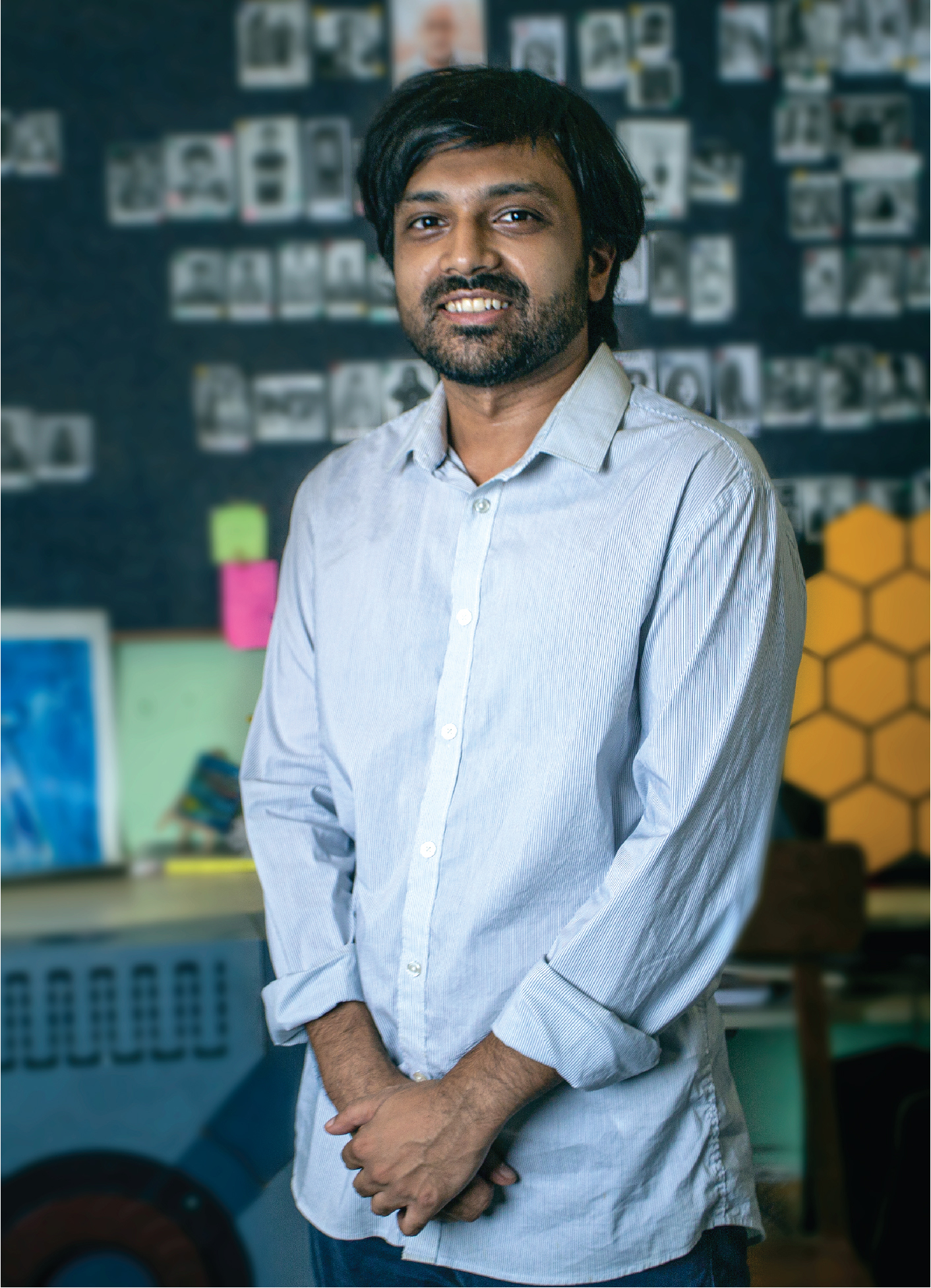In conversation with director, writer and producer Amit Ashraf on his journey as a filmmaker, as well as the sci-fi film that he is currently working on, PROJECT OMMI.

Director, writer and producer
Despite being born and brought up in the US, your work affirms deep knowledge and connections with your roots in Bangladesh. How has your unique upbringing shaped the artist you are today?
Despite growing up in the US, I spent all my summer holidays in Bangladesh. I’m trained in filmmaking, scriptwriting and animation from NYU, and I am now applying what I learned to tell stories based on Bangladeshi society. The film I’m working on right now, PROJECT OMMI, is a fusion of these worlds; it is a sci-fi movie depicting Bangladesh in the future.
Tell us a bit about your experience of making Udhao. Were you able to execute your vision for them to your satisfaction? Would you say that those experiences have helped you gain more insight as a filmmaker?
I made Udhao when I was 22, right after college. I learnt more while making Udhao than during my four years of film school combined. There are certain aspects of the film that I wish I had done differently, but I did learn a lot. Kathal is my latest finished film, and I learned so much more in terms of writing and storytelling through making it. I worked with a Bangla writer to make sure the dialects were right and that the dialogue was funny. I was a perfectionist regarding the audition process and made sure there were a number of rounds of auditions as well as chemistry tests, but as a result, the cast was immaculate.
Your upcoming science-fiction thriller, PROJECT OMMI is perhaps the most anticipated sci-movie ever produced in Bangladesh. Since sci-fi is still an obscure genre for both the audience and industry in Bangladesh, how challenging has the production been?
What excites me about filmmaking is telling stories that have rarely been attempted. Udhao is a gangster film, Kali is a superhero web series, Kathal is a children’s comedy film. I don’t want to produce certain kinds of films just because distributors think I should. Audiences always appreciate good content, and distributors should take a chance on new things.
Funding is always a challenge in every film, and PROJECT OMMI is no exception. However, the film is a better investment opportunity as it will be sold both locally and globally. As it is being shot here, the cost of producing the film is very low compared to international production costs. We also have some recognized actors, which makes the film more appealing. I would like to sell the movie to global distributors, theatre chains or streaming services.
Besides having produced critically acclaimed movies, you have also founded Kazi House Productions and Ogopogo Studios. What can we expect from the two entities?
Kazi House Productions focuses on live-action films, while Ogopogo Studios is a stop-motion studio (working with miniatures and puppets). The stop-motion workshop is being used as a prop-making workshop, Along with making props, it will also focus on VFX. I am very happy that both Kazi House Productions and Ogopogo Studios are successful companies.
For PROJECT OMMI, the people on the team who are making the props have never worked on sci-fi films, but rather on traditional films. They have been doing a very good job. The next challenge will be doing realistic cinematic VFX. We hope to collaborate with the ICT ministry, government officials came to the studio and they were quite excited about what we were doing. I believe PROJECT OMMI can inspire people regarding technology. The film portrays AI and robots in a unique way, and shows the audience the dynamics of its use. Sci-fi is not an advertisement for technology, it’s about humans’ relationship with technology, and can sometimes serve as a cautionary tale.
How long do you think it will take for VFX animation to go mainstream in Bangladesh?
I believe that PROJECT OMMI can catalyse the proliferation of VFX in Bangladesh. Animators in Bangladesh haven’t really worked on cinematic VFX, they have worked on TVCs and freelance work for clients abroad. Even though I wanted the entire movie to be made in Bangladesh, part of the VFX is going to be made abroad. Making any movie is a collaborative process, and Bangladesh definitely has the skill and talent to perfect cinematic VFX in the upcoming years.
